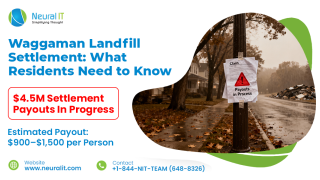Connecticut Pays $2.25M to Settle Nurse Killing Lawsuit Involving Convicted Offender
Connecticut Pays $2.25M to Settle Nurse Killing Lawsuit Involving Convicted Offender

Introduction
Last Updated: October 3, 2025
Connecticut has agreed to pay $2.25 million to settle a wrongful death lawsuit filed by the family of a home health care nurse who was murdered while treating a patient at a state-run halfway house. The case, filed in 2024, accused the state of negligence in supervising a violent offender on probation. The 2023 murder drew national attention, leading to new safety laws and increasing pressure on healthcare employers and government agencies to protect frontline workers.
The case reignited national calls for stronger protections for home health care workers, who often face significant risks while working alone. A state judge in Hartford approved the agreement, which resolves the portion of the lawsuit against state agencies, though talks with other defendants are still ongoing.
Nurse Killed While On Duty at Connecticut Halfway House
The victim, a 63-year-old mother of six and a nurse with 36 years of experience, was killed while on a routine visit to a Willimantic halfway house on October 28, 2023. She had gone there to administer medication to a patient—an individual on probation after serving time for a violent 2006 assault involving stabbing and sexual assault. Later that day, police discovered her body in the basement of the home. The medical examiner determined the cause of death to be compression of the neck and blunt force injuries. The perpetrator pleaded guilty to murder and was sentenced in September to 50 years in prison.
Family Lawsuit Alleges State Negligence in Offender Supervision
The nurse’s husband filed the lawsuit alleging that Connecticut officials failed to properly supervise the offender during his probation period and neglected to protect the public from a known violent criminal. The complaint accused the Department of Correction and the state’s Judicial Branch of allowing him to remain free despite violations of probation and without sufficient mental health or substance abuse treatment. It also claimed that the offender was permitted to interact with visiting nurses despite his violent history.
According to the family’s attorney, the settlement represents an acknowledgment of the state’s involvement in the events that led to the nurse’s death. “The family hopes this settlement demonstrates that the state is taking responsibility for its role in this horrific crime,” the attorney said. As part of the agreement, family members will meet with state agency representatives to discuss preventive measures to avoid similar tragedies in the future.
State Denies Wrongdoing
The Connecticut attorney general’s office, which represented the state, declined to comment beyond the court filing. The settlement document specifies that the agreement does not constitute an admission of wrongdoing by the state. However, it allows the family to receive compensation while officials explore policy and procedural improvements in offender supervision.
Employer Elara Caring Faces Lawsuit Over Worker Safety Failures
The victim’s husband also brought claims against her employer, Dallas-based Elara Caring, and its affiliates. The lawsuit alleges that the company ignored repeated safety concerns raised by employees about visiting high-risk patients in the community. Elara Caring has denied those claims, calling them “unwarranted,” and asserted that state authorities—not the company—were responsible for assessing and monitoring the offender’s risk level. The company declined further comment, referring to earlier statements.
Connecticut Lawmakers Pass 2024 Law to Protect Health Workers
In response to the tragedy, Connecticut legislators passed a law in 2024 to strengthen workplace protections for home health care professionals. The new legislation provides funding for employers to equip staff with emergency alert buttons, tracking devices, buddy escort programs, and safety training. The nurse’s death also drew widespread national attention, prompting health care organizations and labor unions to call for similar reforms across the country.
Health Care Worker Violence on the Rise Nationwide
Workplace violence in health care settings remains a growing concern. A 2023 national survey by National Nurses United found that over 80% of nurses reported experiencing at least one form of workplace violence that year, with nearly half saying such incidents had increased compared to 2022. The Connecticut case has since become a rallying point for advocates seeking to better protect those who provide critical care services in people’s homes and communities.
What's Next for Health Care Worker Safety?
While the $2.25 million settlement closes a painful chapter for the victim’s family, legal and labor advocates say much more must be done to prevent similar tragedies. Additional lawsuits, safety legislation, and funding for healthcare worker protections are expected in 2025 and beyond.




